|

Fritz Pölking
Turn up the
size…
In the past I never like using a 2x converter too much, they
were not especially good and with the doubled aperture and the darker view
finders they
were not very well suited for taking sharp pictures.
Now, since there is AF (auto focus), you can focus extremely
fast, to a tee, view finders
are much lighter compared to the past and the present generation of 2x
AF-converters from Canon and Nikon are visually also a lot better.
Together with the long Canon focal length, which is set, it is
gratifying that, with the added two levels of longer exposure, the greater risk
of blurring the picture is practically leveled out with the built-in stabilizer.
That is the reason why I frequently used a 2x converter during
my last tour of the Masai Mara in November of 2002, which I placed behind the
500 mm lens in order to try out if I liked it.
Of course you really want to take beautiful, interesting,
exciting and amazingly adjusted photos, when most of the time you stand for
hours in front of an animal and nothing is happening.
So sometimes you can help yourself with some old rules like:
"If you are unable to take a good picture of your motif, at least
"turn up the size" and make it big. So doing that, a 2x converter is
certainly a welcome help.
With a 1.4x converter a lens will, according to my experience,
loose about 10% in quality, with a 2x converter about 20%.
So the better the basic lens (and the converter) the better
the results and a top of the line lens from a well-known manufacturer will, with
converter, bring better results compared to a mediocre lens without.
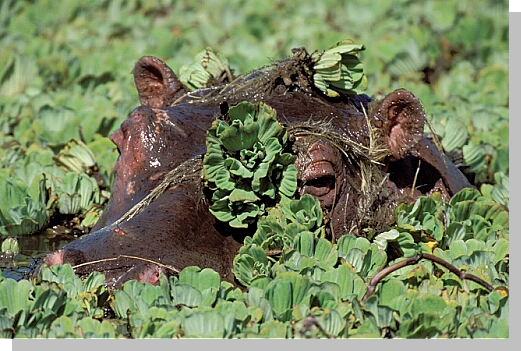
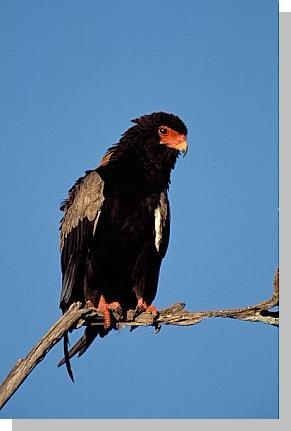
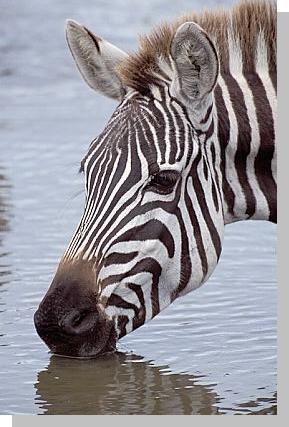
Hippo, Bateleur
and Zebra
EOS-1V, 4.0/500 mm with 2x converter,
Car window mount, Sensia-100
* * *
A new auto-focus lens:
11.0/1400 mm.
A personal tip for special occasions:
The two new Canon converters 1.4x II and 2x II can be attached
behind each other without connecting ring. That way the exposure functions, the
stabilizer and – the auto focus as well – can be maintained.
With the EOS-1 V and the 4.0/500 plus two converters you get a
telephoto lens 11.0/1400mm. The AF of course does not work as fast or as well
with an aperture of 11 and the long focal length, as with a 4.0 aperture and the
500mm. But, with a normal contrast, there are no major problems, especially with
giant telephotos as such, with minimal depth sharpness and the problem of
keeping this combination steady as well as not blurring the picture, AF is a
blessing (and the stabilizer is, too).
So, with a giant lens of 1400mm focal distance you can take
the most unusual pictures, which I hadn’t even dreamt of before.
Here are two examples:
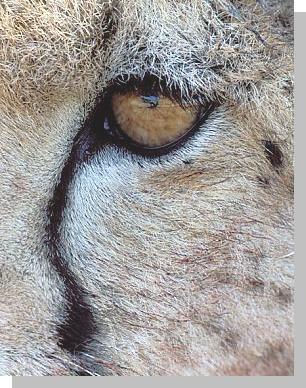
The eye of a Cheetah

Fig tree with a leopard’s tail
It is the same tree and the same leopard you
could see
in the previous picture of the forgoing
article (news from the family).
Both pictures with:
EOS-1V, 4.0/500 mm with 1.4x and 2x converters, auto focus
and stabilizer turned on.
Burzynski car mount, Sensia-100
Masai Mara, Kenya.
….and this is what the tools of the
trade look like:
two converters between lens and camera.
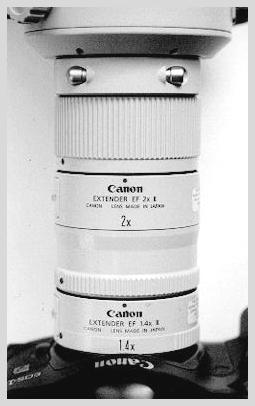
With the EOS-1 V the functions for
exposures remain as well as the
stabilizer and the auto focus if you use
both converters simultaneously.
With the EOS-3 you have to
manually adjust the sharpness.
* * * * *
|